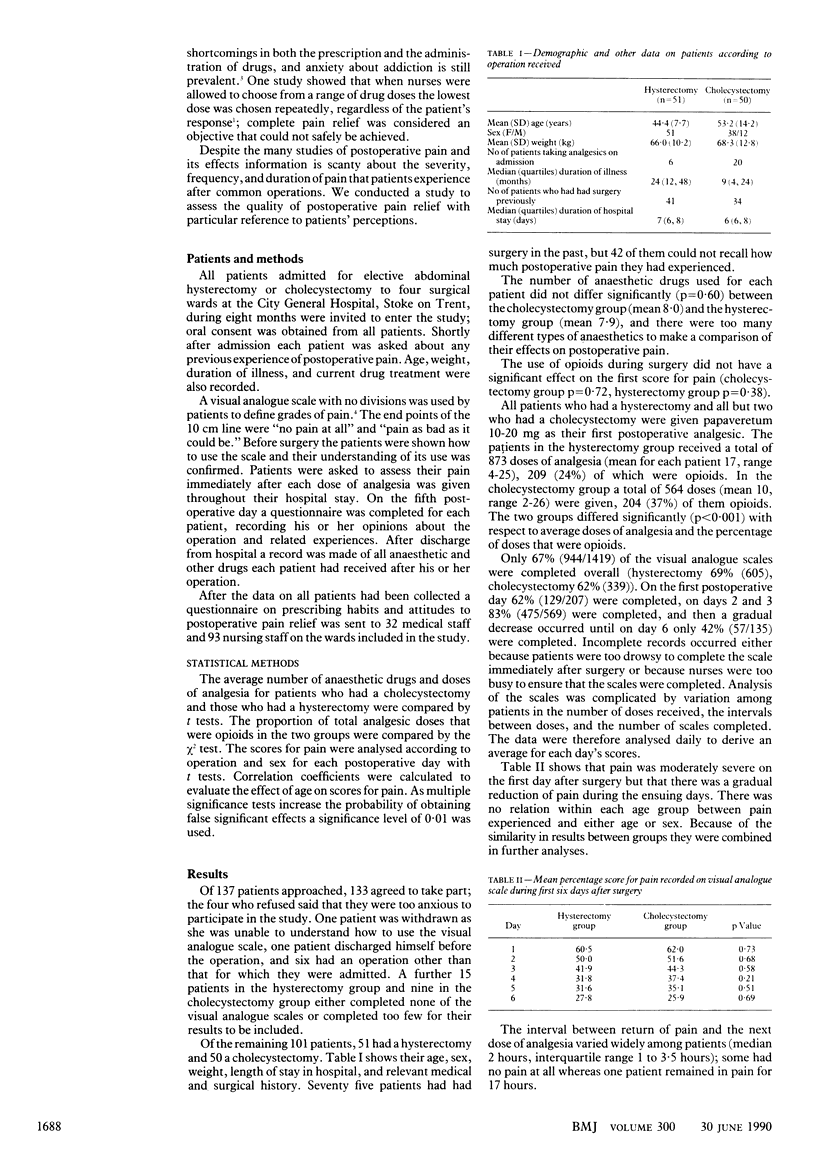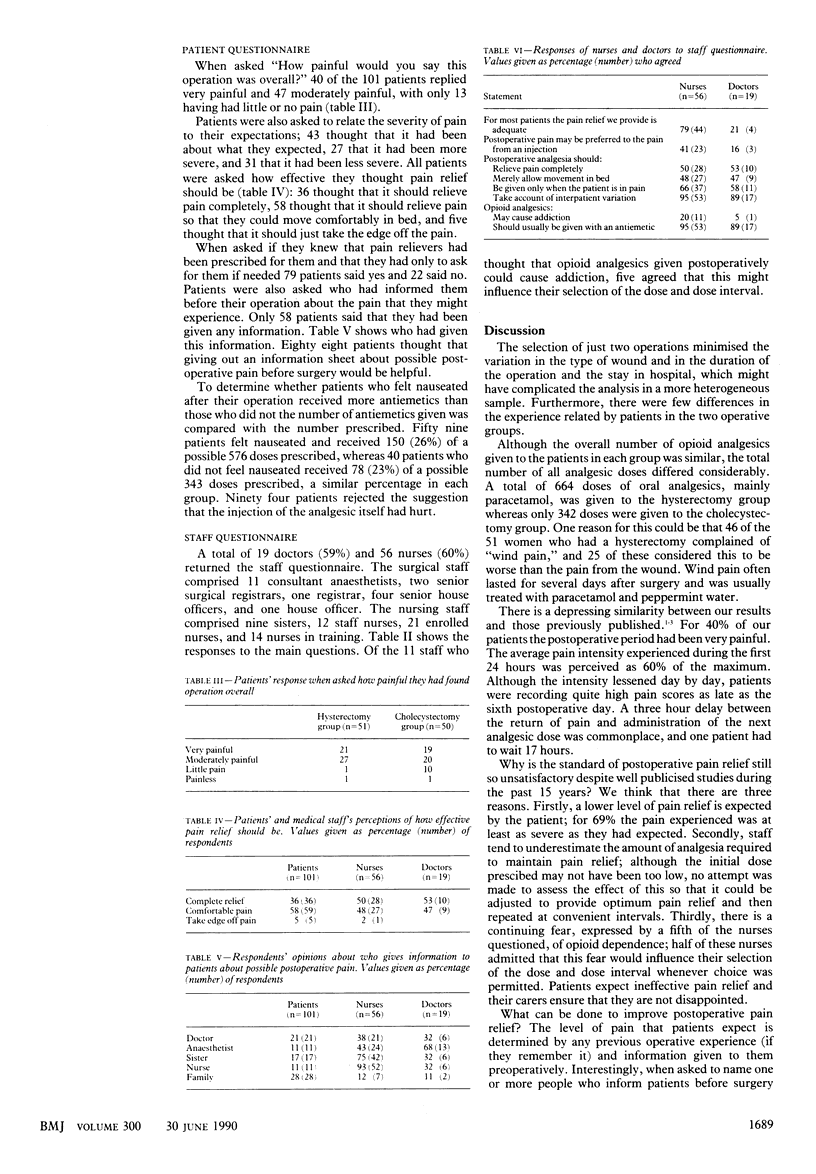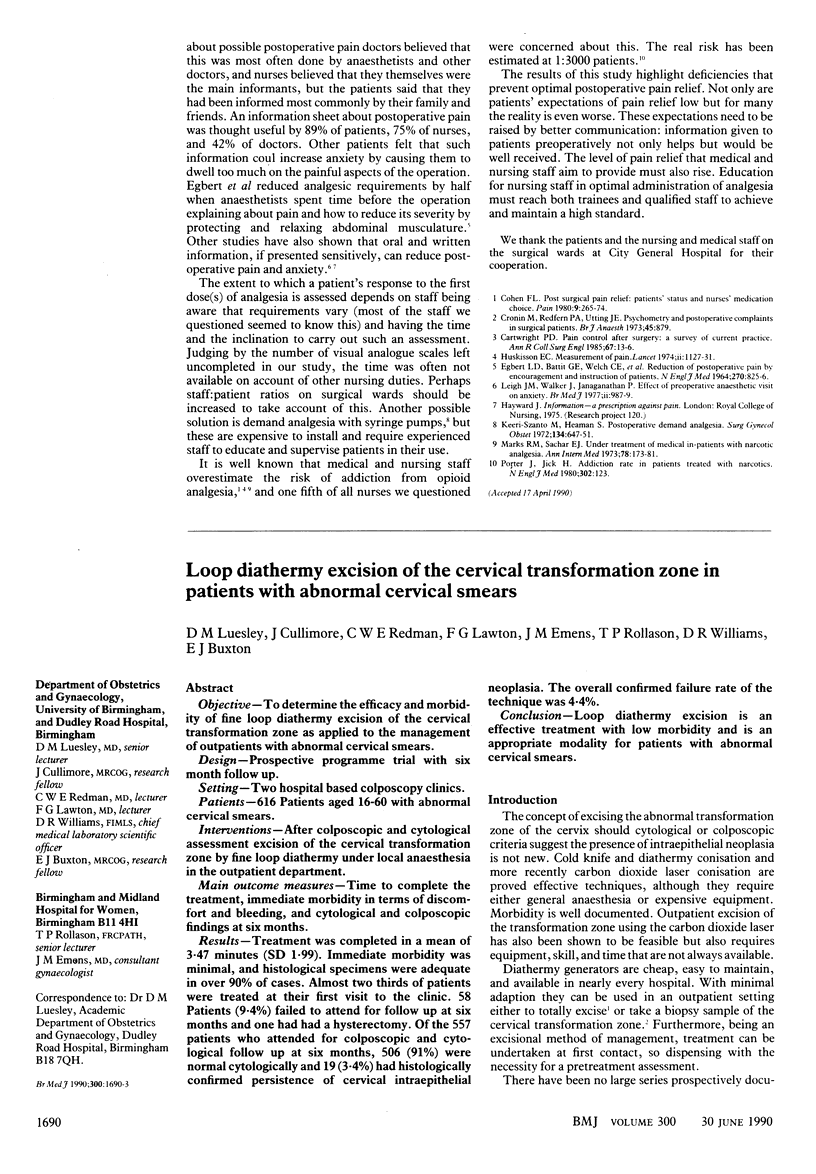Abstract
OBJECTIVE--To assess patients' satisfaction with postoperative pain relief. DESIGN--A descriptive and questionnaire study of patients' experience. SETTING--Two surgical and two gynaecological wards. PATIENTS--50 Patients admitted to hospital for cholecystectomy and 51 admitted for hysterectomy. MAIN OUTCOME MEASURES--Visual analogue scales with no divisions were completed by the patients immediately after each dose of postoperative analgesia was administered throughout their stay in hospital. A questionnaire completed on the fifth postoperative day recorded patients' recollections of their experience. Opinions were also sought from medical and nursing staff. RESULTS--During the first 24 hours after surgery recorded pain levels were 60% of the maximum and were not influenced by age, sex, or the type of operation performed. The median interval between the return of pain and a further injection of analgesic was 2 hours (interquartile range 1 to 3.5 hours). Expectations of pain relief were low, and for 70% of the patients the pain was at least as bad as they had expected. Only half of the medical and nursing staff questioned thought that postoperative analgesia should relieve pain completely; drugs were prescribed and administered with too little attention to the patient's response and too much concern about adverse effects and opioid dependence. CONCLUSIONS--The results suggest that the standard of postoperative pain relief is poor because of inadequate education of patients in what to expect (and demand), and of medical and nursing staff in how to prescribe and administer analgesia with reference to individual drug response.
Full text
PDF



Selected References
These references are in PubMed. This may not be the complete list of references from this article.
- Cartwright P. D. Pain control after surgery: a survey of current practice. Ann R Coll Surg Engl. 1985 Jan;67(1):13–16. [PMC free article] [PubMed] [Google Scholar]
- Cohen F. L. Postsurgical pain relief: patients' status and nurses' medication choices. Pain. 1980 Oct;9(2):265–274. doi: 10.1016/0304-3959(80)90013-5. [DOI] [PubMed] [Google Scholar]
- Cronin M., Redfern P. A., Utting J. E. Psychiatry and postoperative complaints in surgical patients. Br J Anaesth. 1973 Aug;45(8):879–886. doi: 10.1093/bja/45.8.879. [DOI] [PubMed] [Google Scholar]
- EGBERT L. D., BATTIT G. E., WELCH C. E., BARTLETT M. K. REDUCTION OF POSTOPERATIVE PAIN BY ENCOURAGEMENT AND INSTRUCTION OF PATIENTS. A STUDY OF DOCTOR-PATIENT RAPPORT. N Engl J Med. 1964 Apr 16;270:825–827. doi: 10.1056/NEJM196404162701606. [DOI] [PubMed] [Google Scholar]
- Huskisson E. C. Measurement of pain. Lancet. 1974 Nov 9;2(7889):1127–1131. doi: 10.1016/s0140-6736(74)90884-8. [DOI] [PubMed] [Google Scholar]
- Keeri-Szanto M., Heaman S. Postoperative demand analgesia. Surg Gynecol Obstet. 1972 Apr;134(4):647–651. [PubMed] [Google Scholar]
- Leigh J. M., Walker J., Janaganathan P. Effect of preoperative anaesthetic visit on anxiety. Br Med J. 1977 Oct 15;2(6093):987–989. doi: 10.1136/bmj.2.6093.987. [DOI] [PMC free article] [PubMed] [Google Scholar]
- Marks R. M., Sachar E. J. Undertreatment of medical inpatients with narcotic analgesics. Ann Intern Med. 1973 Feb;78(2):173–181. doi: 10.7326/0003-4819-78-2-173. [DOI] [PubMed] [Google Scholar]
- Porter J., Jick H. Addiction rare in patients treated with narcotics. N Engl J Med. 1980 Jan 10;302(2):123–123. doi: 10.1056/nejm198001103020221. [DOI] [PubMed] [Google Scholar]


